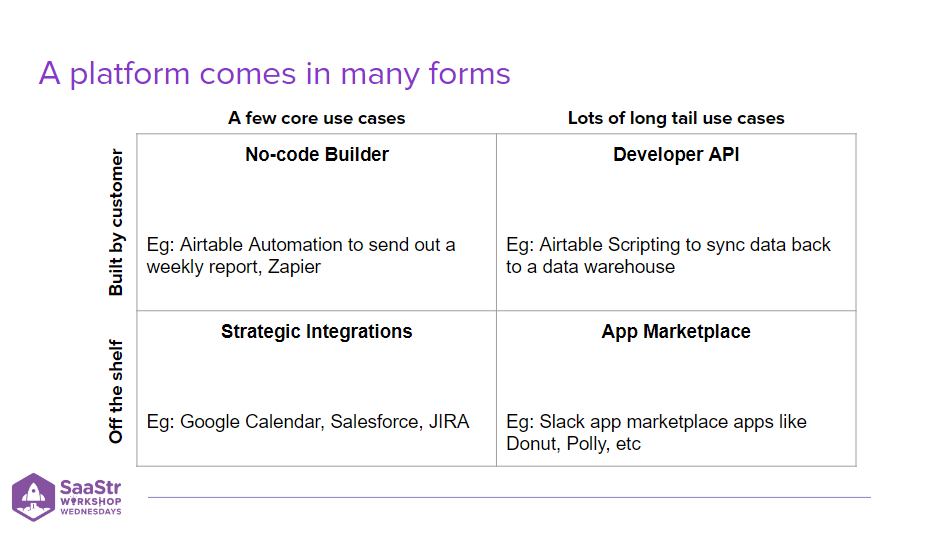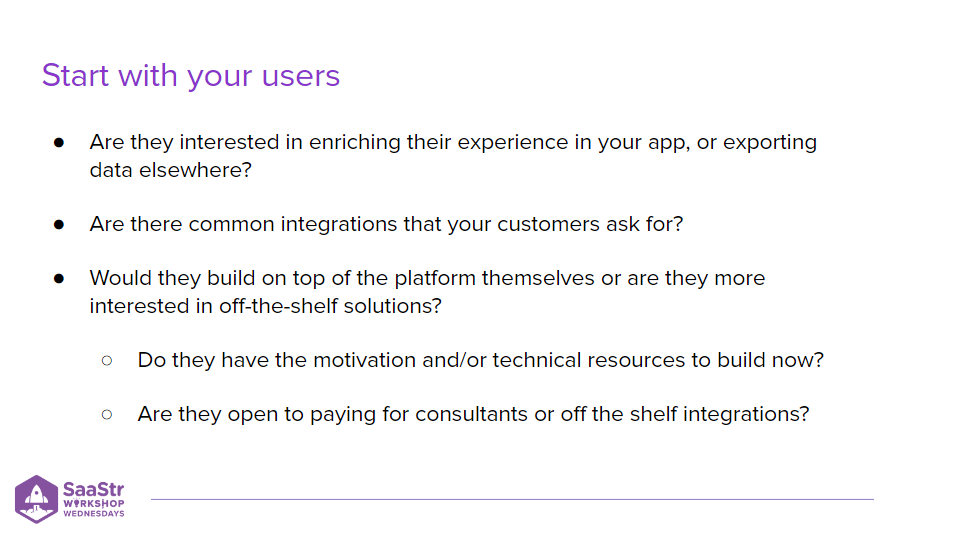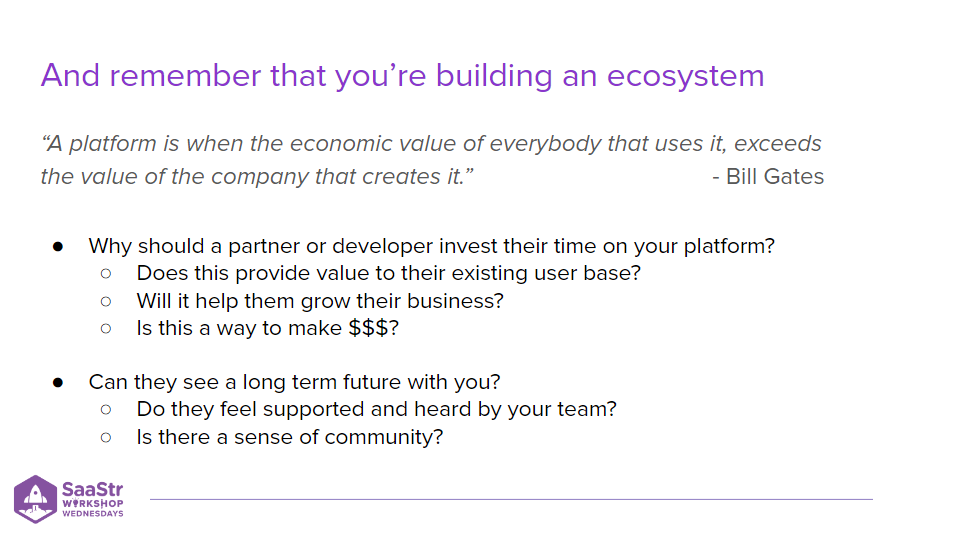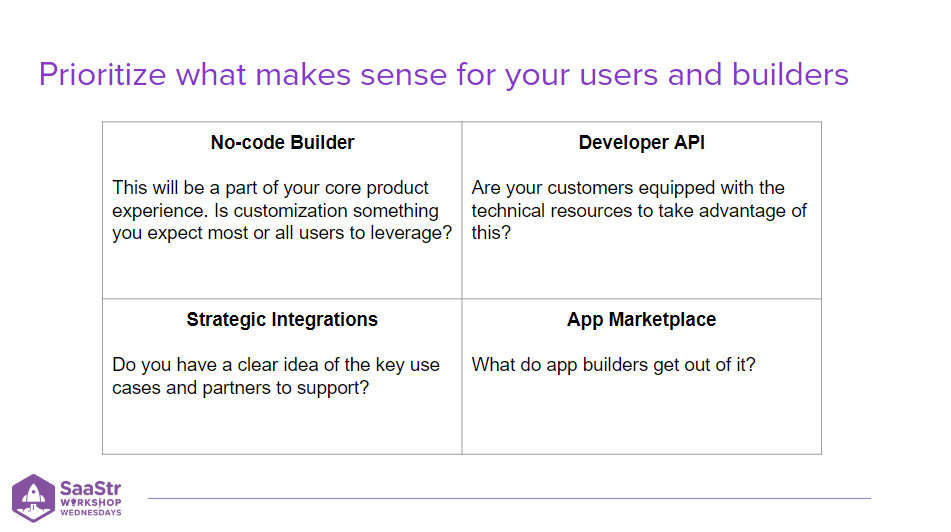You’ve built your core product, and customers love it. So is it time to build a platform? And if so, how do you build a compelling platform that empowers users to customize their product that serves specific needs?
Helen Zeng, Product Manager at Airtable, shares her extensive experience in low-code platform building at Slack, Twitter, and Microsoft and offers a guide for building platforms that scale. Zeng says, “Essentially, customers just don’t want to settle for one-size-fits-all enterprise software anymore. They want solutions that work for exactly what they need, and being able to provide that is a significant competitive advantage.”
Do You Need a Platform?
Sometimes, a business thinks of platforms as a way to simply bandage gaps in its core product. The thought is that if a customer wants a certain feature, they can just use the API. While this can be true and work well, you must be sure that this isn’t your way of solving glaring product needs. Zeng emphasizes, “An API is not this cure-all, especially not if your typical users are not technical.”
Further, building a platform is an investment, so only start down that road if it suits your business needs. Take stock of what will address your long-term goals, and consider whether your customers are at the point where they want to customize your software at all.

Different Types of Platforms
“Platforms can either be something that solves a couple of core use cases or something that helps you address a huge long-tail of use cases,” says Zeng. When you are starting out, especially when you have a smaller user base or a targeted solution, you may know that there are a few specific integrations your customers are asking for, like Google Calendar, JIRA, Salesforce, etc., or a few core needs. In those instances, you might have a few strategic integrations that come off the shelf, or you can introduce a no-code builder that addresses simple use cases.
However, as your customer base grows and your audiences become more diverse, you may see more long-tail use cases, and those complex uses might become more specific for each business. So, you may introduce a developer API or build an app marketplace if there is enough community interest.
Remember that you don’t need to have all these pieces at once, so consider what works with your business now and start there.

Understanding User Motivations
The most critical element of building a platform is understanding your user motivations. Start by asking the following questions:
- Are your customers interested in enriching their experience in your app or exporting data elsewhere?
- Are there common integrations that your customers ask for?
- Would they build on top of the platform themselves, or are they more interested in off-the-shelf solutions?
- Do they have the motivation and/or technical resources to build now?
- Are they open to paying for consultants or off-the-shelf integrations?
Your most important relationship will be with the builders. Builders are the people setting up your software for the rest of their organization. Ultimately, you need to know what their customers want to get the clearest picture of how you can deliver the highest value. So, prioritize understanding your customer’s customers.

Remember That You Are Building an Ecosystem
As your business scales and as you evolve a platform, you must figure out how to maximize usefulness and aim at the right target. Zeng says, “I think you need to remember that you’re building an ecosystem, so figuring out which builders you want to target is really, really important. So if you’re thinking, ‘I want to support these partners who are building strategic integrations for us,’ or, ‘I want to find community developers that are building integrations that our customers can plug into and pay for,’ make sure you are telling that story to the ecosystem well.”
Be ready to explain to a partner or developer why they should invest their time in your platform. Does it provide value to their customer base, and can it grow their business, or can they make money from it? Furthermore, do they see a long-term future with you?

Key Takeaways
- Don’t expect your platform to solve core product problems. Your platform is supposed to build on top of your core product and extend that.
- Understand what your users and your builders get out of it.
- Build your platform one step at a time.

